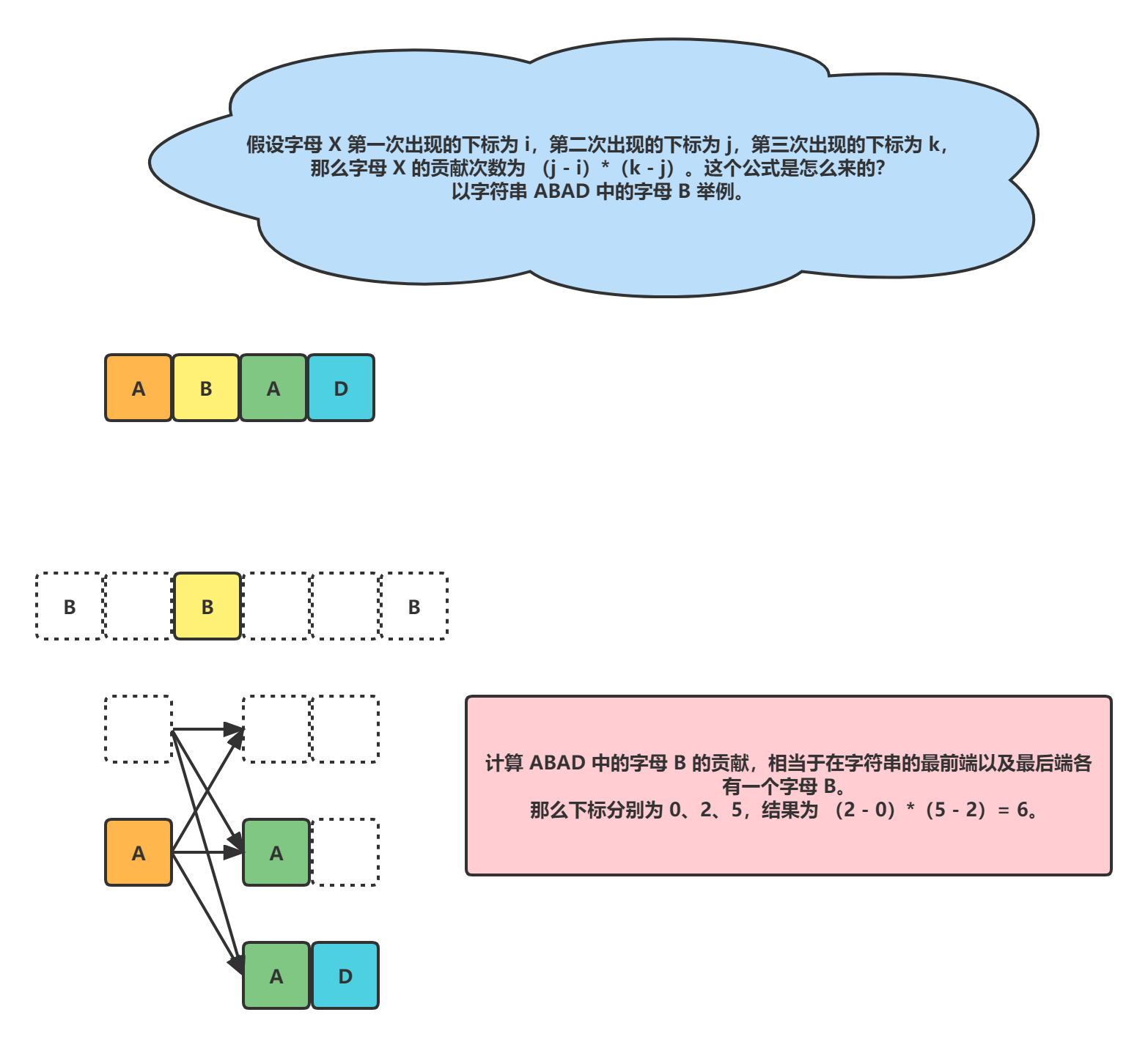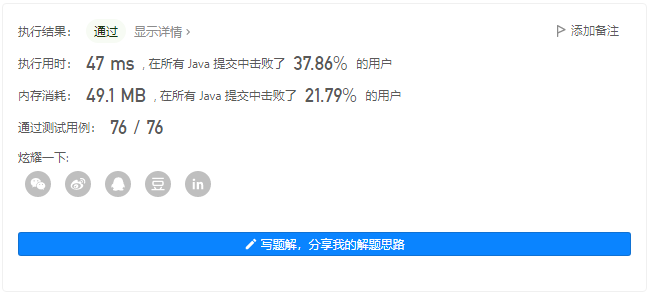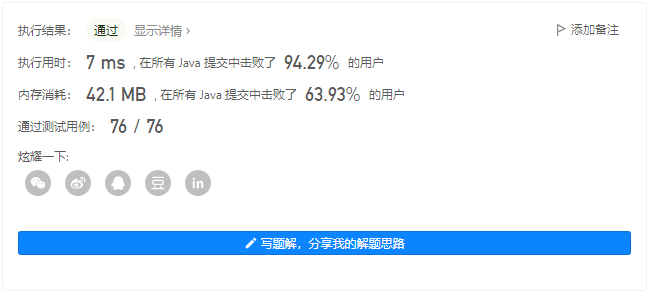题目描述
我们定义了一个函数 countUniqueChars(s) 来统计字符串 s 中的唯一字符,并返回唯一字符的个数。
例如:s = "LEETCODE" ,则其中 "L", "T","C","O","D" 都是唯一字符,因为它们只出现一次,所以 countUniqueChars(s) = 5 。
本题将会给你一个字符串 s ,我们需要返回 countUniqueChars(t) 的总和,其中 t 是 s 的子字符串。输入用例保证返回值为 32 位整数。
注意,某些子字符串可能是重复的,但你统计时也必须算上这些重复的子字符串(也就是说,你必须统计 s 的所有子字符串中的唯一字符)。
示例 1:
1
2
3
4
5
| 输入: s = "ABC"
输出: 10
解释: 所有可能的子串为:"A","B","C","AB","BC" 和 "ABC"。
其中,每一个子串都由独特字符构成。
所以其长度总和为:1 + 1 + 1 + 2 + 2 + 3 = 10
|
示例 2:
1
2
3
| 输入: s = "ABA"
输出: 8
解释: 除了 countUniqueChars("ABA") = 1 之外,其余与示例 1 相同。
|
示例 3:
提示:
1 <= s.length <= 10^5s 只包含大写英文字符
来源:力扣(LeetCode)
题解

以字符串 "ABA" 为例,第一个字母 A 符合条件的子字符串为 "A","AB";第二个字母 A 符合条件的子字符串为 "BA","A";字母 B 符合条件的子字符串为 "B","AB","BA","ABA",总计:2 + 2 + 4 = 8。
哈希表
1
2
3
4
5
6
7
8
9
10
11
12
13
14
15
16
17
18
19
20
21
22
23
| public int uniqueLetterString(String s) {
Map<Character, List<Integer>> indexMap = new HashMap<>();
for (int i = 0; i < s.length(); i++) {
char c = s.charAt(i);
if (!indexMap.containsKey(c)) {
indexMap.put(c, new ArrayList<Integer>());
indexMap.get(c).add(-1);
}
indexMap.get(c).add(i);
}
int ans = 0;
for (Character character : indexMap.keySet()) {
List<Integer> indexList = indexMap.get(character);
indexList.add(s.length());
for (int i = 1; i < indexList.size() - 1; i++) {
ans += (indexList.get(i) - indexList.get(i - 1)) * (indexList.get(i + 1) - indexList.get(i));
}
}
return ans;
}
|

数组
1
2
3
4
5
6
7
8
9
10
11
12
13
14
15
16
17
18
19
20
21
22
23
24
25
26
27
28
29
| public int uniqueLetterString(String s) {
int n = s.length();
int[][] arr = new int[26][2];
for (int i = 0; i < 26; i++) {
arr[i] = new int[] {-1, -1};
}
int ans = 0;
for (int i = 0; i < n; i++) {
int idx = s.charAt(i) - 'A';
if (arr[idx][1] != -1) {
ans += (arr[idx][1] - arr[idx][0]) * (i - arr[idx][1]);
arr[idx][0] = arr[idx][1];
}
arr[idx][1] = i;
}
for (int i = 0; i < 26; i++) {
if (arr[i][1] != -1) {
ans += (arr[i][1] - arr[i][0]) * (n - arr[i][1]);
}
}
return ans;
}
|

参考资料
__END__


